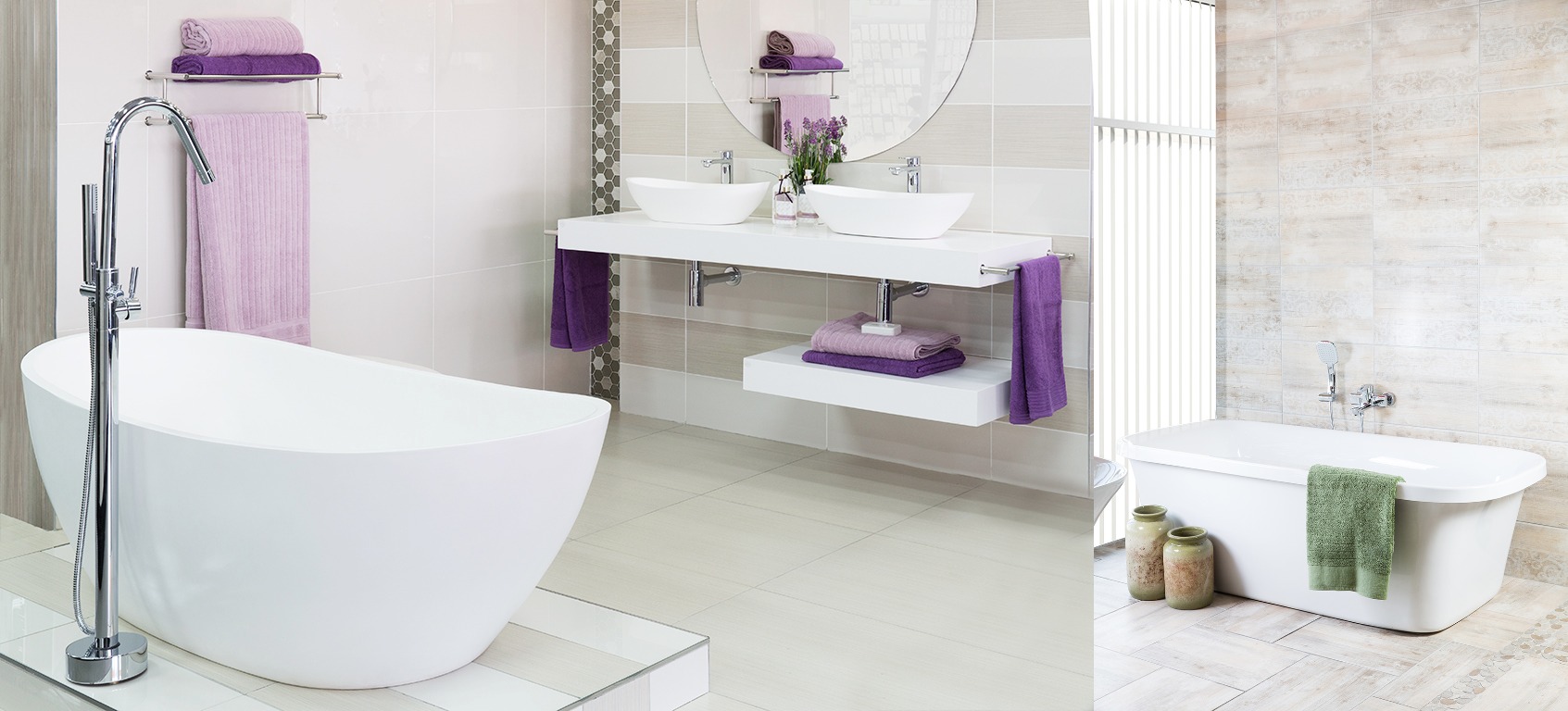Tiles offer many benefits in comparison to other flooring options that you may consider for your home. One particular advantage is the ease of cleaning that tiles provide – no more professional cleaning or the worry about permanent stains.
“Tiles are extremely durable and have a longer life span than other flooring systems such as carpets. They can also be used indoors and outdoors as well as design features in the home, for example on walls in the bathroom, kitchen or any other area that may need a facelift” says Debra Retief marketing manager at Tile Africa .
Before embarking on selecting tiles, it helps to know what the various tile types are and what areas they are better suited to.
Different tile types
Ceramic tiles
These tiles are available in a wide variety of colours, patterns and sizes. Additionally they complement almost any furnishings and decor; they also have a long service life and are both scratch and fade resistant. Ceramic tiles can also be used for both floor and wall tiles but what’s important to note is that the two may not always be used interchangeably as floor tiles are designed to have a higher abrasion resistance. “Consider ceramic tiles for your lounge, kitchen, bathroom and bedroom,” she says.
Porcelain
Porcelain tiles are manufactured from ceramic material, however, these tiles are fired at higher temperatures than ceramic. Porcelain is available glazed or unglazed –the latter may also be referred to as full bodied tiles. These tiles are resistant to moisture, deep abrasion and frost and can be used in outside areas, if they are not polished, as moisture will make them slippery. Porcelain tiles are also suited to areas that have high traffic such as the kitchen and also work well in the bathroom.
Porcelain and ceramic tiles now replicate the beautiful patterns of natural stone and are easier to install than natural stone tiles. “The latest porcelain tiles also imitate wooden planks and can be used inside and outdoors,” she says.
Natural stone tiles
These include slate, sandstone, granite and natural marble such as travertine and are all different in appearance but are a once in a lifetime purchase as their colour doesn’t fade. An important consideration is that these tiles need to be sealed to prevent staining on the tiles.
Stone tiles have striking variations of both pattern and colour and may be a little more complex to install than ceramic and porcelain options. “We recommend installation by a professional and they will also be able to seal the tiles,” says Retief. Natural tiles work well outdoors due to their durability and resistance to rain and sun, provided they’re sealed to prevent staining.
Mosaics
Mosaics are tiny tiles which come in a variety of materials including glass, metal and even natural stone. They create decor magic and are a great way of bringing colour and texture to any wall in your home. Glass mosaics have the added benefit of being readily available, they’re also easy to clean and give instant colour and vitality to walls. These tiny tiles also have the ability of withstanding hot and cold temperatures which makes them ideal for areas where extreme temperatures may be present such as the bathroom and kitchen. “One important factor to remember, if choosing natural stone mosaics, is that they need to be sealed to prevent staining,” says Retief.
Inkjet tiles
“Consumers are seeking out flooring solutions that are going to offer them value in the longest term, understanding that cheaper alternatives will not last as long, and will not wear as well. Inkjet tiles offer customers on-trend finishes that they desire without having to pay too much to get the look they’re after,” says Retief.
These beautiful tiles provide a great substitute to home owners who want to embark on home improvements and prefer the natural look, but may not have the budget for natural stone or solid wood flooring.
Inkjet printing technology allows for high definition printing on uneven surfaces such as ceramic and porcelain tiles. This has led to the development of tiles that look exactly like wood and natural stone but at a fraction of the price.
Here are some other useful tips to help facilitate the tile purchasing process:
• It’s a good idea to purchase a few more tiles than what you require for the area you are tiling, this is to accommodate for potential breakages.
• Check that the surface you are tiling is level, this is important as uneven surfaces need to be filled and levelled with a screed.
• Make sure that a quality adhesive is used.
• Ensure that the tiler follows the manufacturer’s instructions in terms of the application of the adhesive and grout.
• Obtain referrals or check references of the tiler and or contractor that you will be using.
• Remember to take into consideration lead times of tiles that need to be ordered or even customised. This is especially important when purchasing tiles that need to be imported or selecting to use new technology such as water jet cutting – which allows one to create designs on the surface of tiles.
#sponsoredpost









Leave a Comment